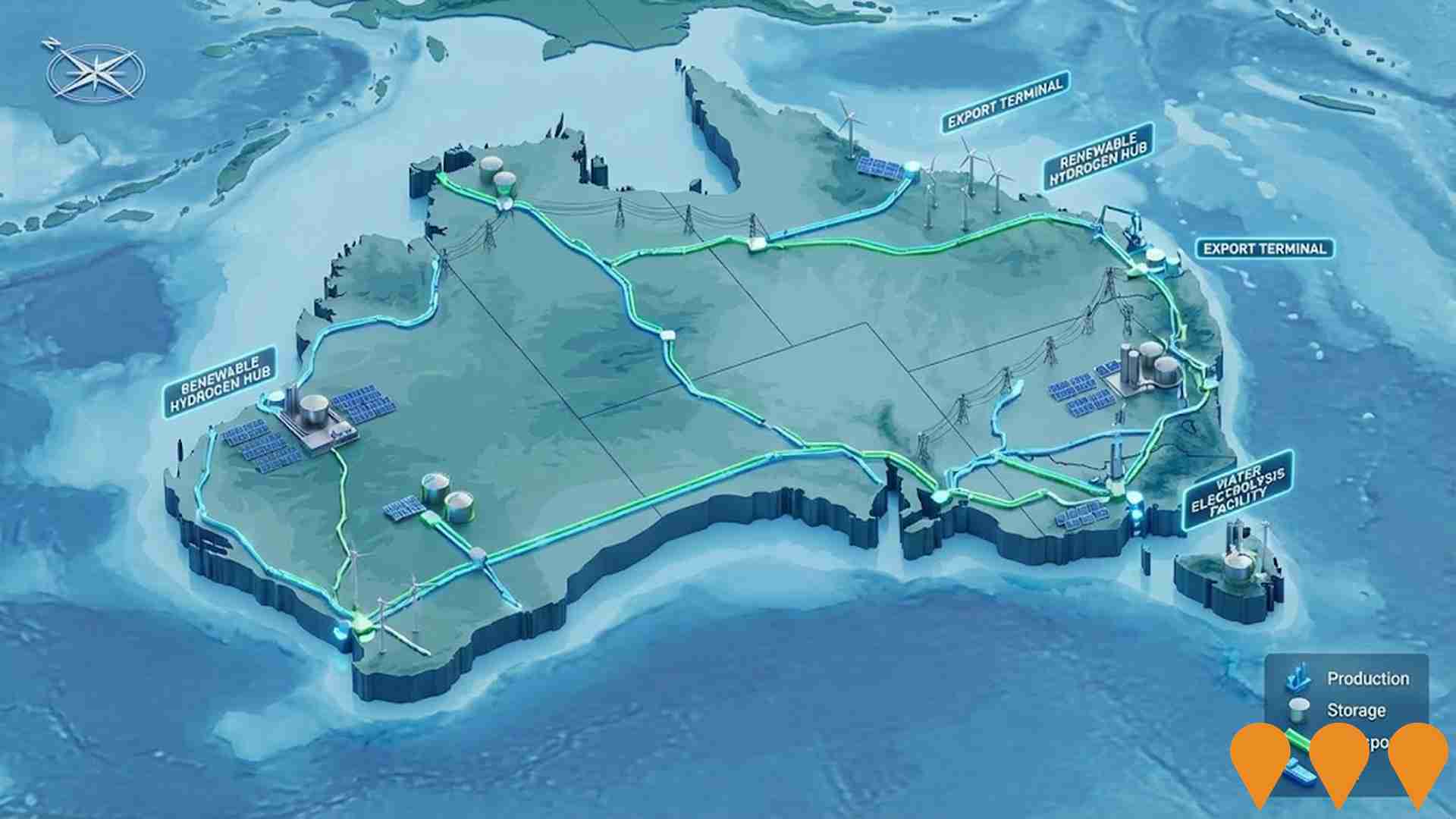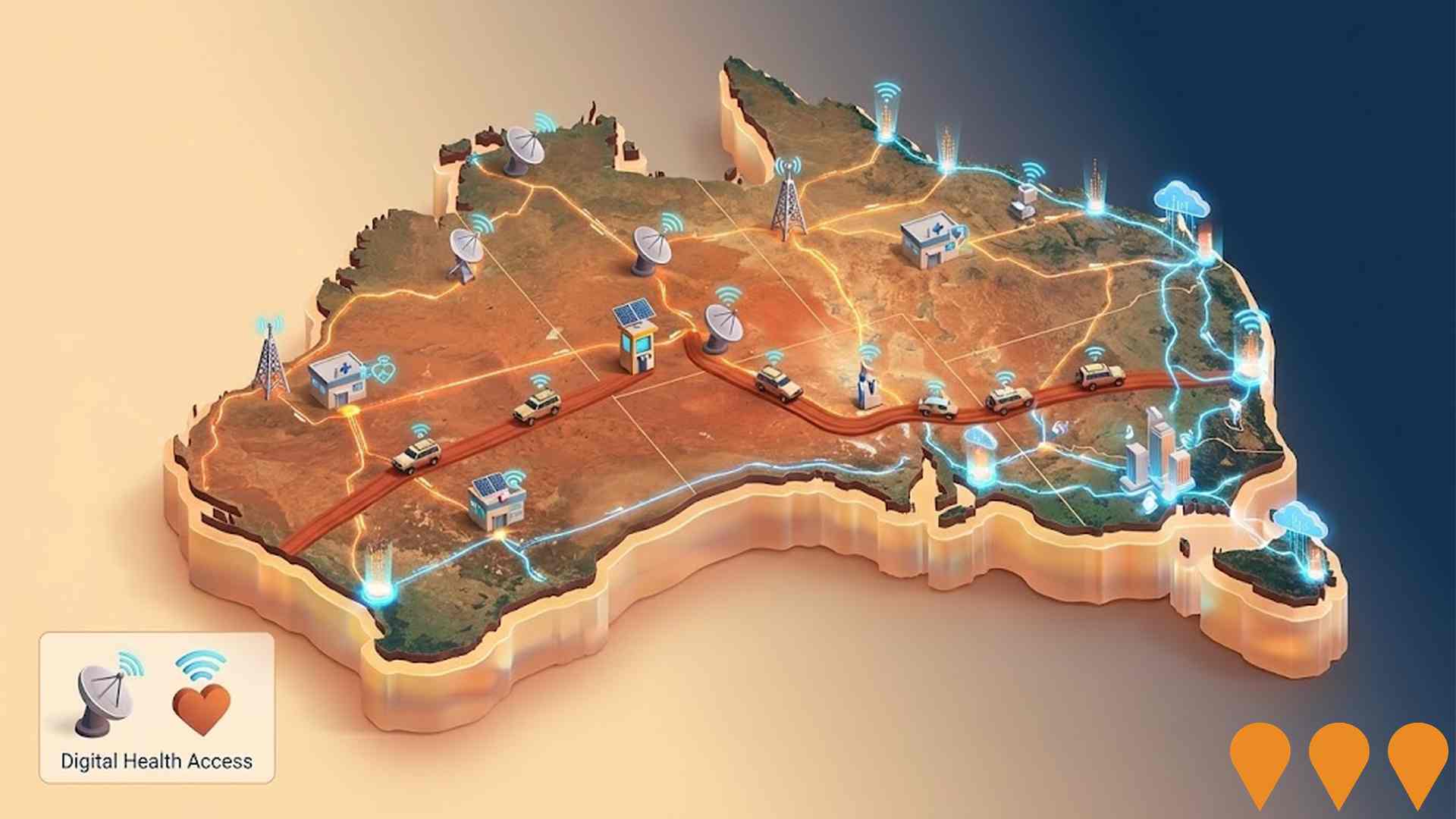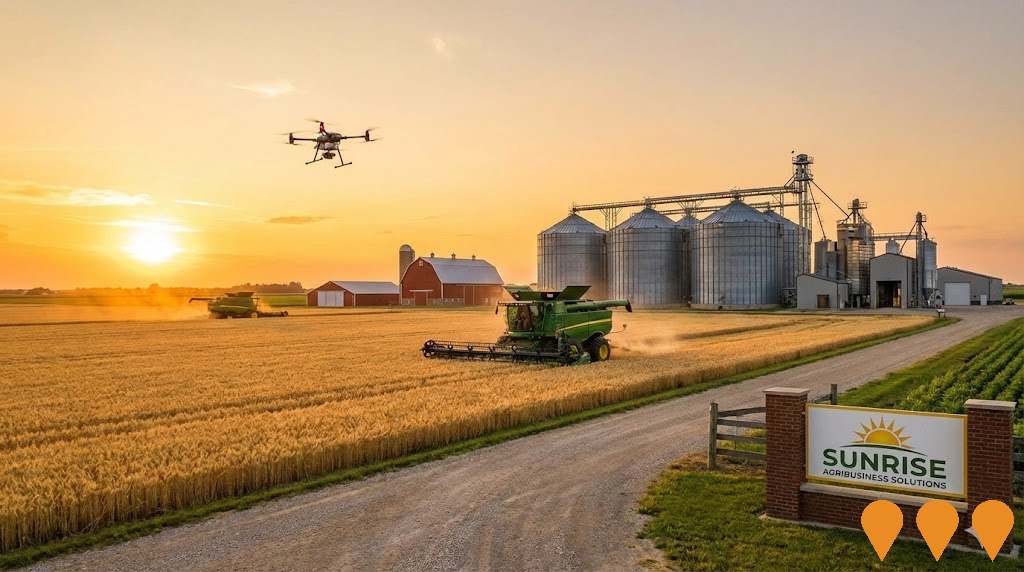Chart Color Schemes
est. as @ -- *
ABS ERP | -- people | --
2021 Census | -- people
Sales Activity
Curious about local property values? Filter the chart to assess the volume and appreciation (including resales) trends and regional comparisons, or scroll to the map below view this information at an individual property level.
Find a Recent Sale
Sales Detail
Population
An assessment of population growth drivers in Forestier - Tasman reveals an overall ranking slightly below national averages considering recent, and medium term trends
Forestier - Tasman's population is around 2,888 as of Aug 2025. This reflects an increase since the 2021 Census figure of 2,593 people, a rise of 295 people (11.4%). The change is inferred from ABS estimated resident population data of 2,722 in June 2024 and additional validated new addresses since the Census date. This results in a density ratio of 4.4 persons per square kilometer. Forestier - Tasman's growth rate exceeded the state average (4.5%) and non-metro areas, marking it as a regional growth leader. Interstate migration contributed approximately 85.7% of overall population gains recently.
AreaSearch uses ABS/Geoscience Australia projections for each SA2 area released in 2024 with a base year of 2022. For areas not covered by this data, Tasmania State Government's Regional/LGA projections from 2022 using 2021 as the base year are adopted and adjusted employing a method of weighted aggregation of population growth from LGA to SA2 levels. Projections indicate an overall population decline, with Forestier - Tasman's population expected to shrink by 207 persons by 2041. However, specific age cohorts like those aged 85 and over are projected to grow, with an increase of 172 people anticipated in this group.
Frequently Asked Questions - Population
Development
Recent residential development output has been above average within Forestier - Tasman when compared nationally
Forestier - Tasman has approved around 30 dwellings annually for development. Between financial years FY21 and FY25, a total of 151 homes were approved, with an additional 4 approved so far in FY26. On average, each dwelling constructed over the past five financial years accommodated approximately 1.6 new residents per year. However, this figure has decreased to 0.8 people per dwelling over the past two financial years.
The average construction value of new properties is $330,000, aligning with regional patterns. This financial year has seen $1.4 million in commercial approvals registered, indicating a primarily residential focus. Compared to the Rest of Tas., Forestier - Tasman records 18.0% less building activity per person but ranks among the 88th percentile nationally, suggesting strong developer confidence in the location. Recent development has consisted solely of detached houses, maintaining the area's low-density nature and attracting space-seeking buyers with an average of around 96 people per approval.
Population projections indicate stability or decline, which should reduce housing demand pressures, benefiting potential buyers in Forestier - Tasman.
Frequently Asked Questions - Development
Infrastructure
Forestier - Tasman has limited levels of nearby infrastructure activity, ranking in the 16thth percentile nationally
No changes can significantly impact an area's performance like alterations to local infrastructure, major projects, and planning initiatives. Zero projects have been identified by AreaSearch that could potentially affect the area. Notable projects include Tasmanian Irrigation Schemes: Tranche 3, Cethana Pumped Hydro Energy Storage Project, Marinus Link, and Telstra InfraCo Intercity Fibre Network, with the following list detailing those most likely to be relevant.
Professional plan users can use the search below to filter and access additional projects.
INFRASTRUCTURE SEARCH
 Denotes AI-based impression for illustrative purposes only, not to be taken as definitive under any circumstances. Please follow links and conduct other investigations from the project's source for actual imagery. Developers and project owners wishing us to use original imagery please Contact Us and we will do so.
Denotes AI-based impression for illustrative purposes only, not to be taken as definitive under any circumstances. Please follow links and conduct other investigations from the project's source for actual imagery. Developers and project owners wishing us to use original imagery please Contact Us and we will do so.
Frequently Asked Questions - Infrastructure
Enabling Infrastructure for Hydrogen Production
Australia has completed the National Hydrogen Infrastructure Assessment (NHIA) to 2050 and refreshed its National Hydrogen Strategy (2024). The programmatic focus has shifted to planning and enabling infrastructure through measures such as ARENA's Hydrogen Headstart and the Hydrogen Production Tax Incentive (from April 2025). Round 2 of Hydrogen Headstart consultation occurred in 2025. Collectively these actions aim to coordinate investment in transport, storage, water and electricity inputs linked to Renewable Energy Zones and priority hubs, supporting large-scale renewable hydrogen production and future export supply chains.

Enabling Digital Health Services for Regional and Remote Australia
National initiative to expand and improve digital health access for people in regional and remote Australia. Focus areas include enabling telehealth and virtual care, upgrading clinical systems and connectivity, supporting secure information exchange, and building workforce capability in digital health, aligned with the Australian Government's Digital Health Blueprint and Action Plan 2023-2033.

Bulk Water Supply Security
Nationwide program led by the National Water Grid Authority to improve bulk water security and reliability for non-potable and productive uses. Activities include strategic planning, science and business cases, and funding of state and territory projects such as storages, pipelines, dam upgrades, recycled water and efficiency upgrades to build drought resilience and support regional communities, industry and the environment.

National EV Charging Network (Highway Fast Charging)
Partnership between the Australian Government and NRMA to deliver a backbone EV fast charging network on national highways. Program funds and co-funds 117 DC fast charging sites at roughly 150 km intervals to connect all capital cities and regional routes, reducing range anxiety and supporting EV uptake.

Network Optimisation Program - Roads
A national program concept focused on improving congestion and reliability on urban road networks by using low-cost operational measures and technology (e.g., signal timing, intersection treatments, incident management) to optimise existing capacity across major city corridors.

Tasmanian Irrigation Schemes: Tranche 3
Development of sustainable water capture and distribution systems in Tasmania to enhance agricultural productivity by enabling dryland farms to transition to higher-value enterprises like fruit or viticulture.

Cethana Pumped Hydro Energy Storage Project
The Cethana pumped hydro project, led by Hydro Tasmania, is part of the Battery of the Nation initiative to enhance Tasmania's renewable storage and generation. It utilizes Lake Cethana as the lower storage, with a new upper storage, underground power station, and tunnels. The project has a generating capacity of 750 MW and storage capacity of 20 hours, requiring transmission upgrades and Marinus Link interconnection.

Marinus Link
Marinus Link involves constructing a second undersea electricity link and supporting infrastructure between Tasmania and Victoria, enhancing the existing Basslink interconnector. The project, part of Project Marinus, includes transmission lines and network upgrades.

Employment
The labour market performance in Forestier - Tasman lags significantly behind most other regions nationally
Forestier - Tasman has an unemployment rate of 4.7% as of June 2015. In June 2025, the unemployment rate is 3.9%, with a workforce participation rate of 43.0%.
The dominant employment sectors are agriculture, forestry & fishing, health care & social assistance, and accommodation & food. Arts & recreation has notably high concentration, at 6.7 times the regional average. Retail trade is under-represented, at 4.9% compared to Rest of Tas.'s 10.1%. The labour force decreased by 5.0% and employment declined by 6.4% from June 2024 to June 2025, leading to a rise in unemployment rate by 1.4 percentage points.
National employment forecasts from May 2025 project growth of 6.6% over five years and 13.7% over ten years. Applying these projections to Forestier - Tasman's employment mix suggests local growth of approximately 5.7% over five years and 12.2% over ten years.
Frequently Asked Questions - Employment
Income
Income metrics place the area in the bottom 10% of locations nationally according to AreaSearch analysis
According to AreaSearch's aggregation of ATO data released for financial year 2022, Forestier - Tasman had a median income among taxpayers of $38,099 and an average level of $48,582. These figures are lower than the national averages of $47,358 and $57,384 respectively for Rest of Tas. Based on Wage Price Index growth of 13.83% since financial year 2022, estimated median income as of September 2025 is approximately $43,368, with average income estimated at $55,301. Census 2021 data shows Forestier - Tasman's household, family and personal incomes fall between the 1st and 4th percentiles nationally. Income distribution indicates that 35.7% of individuals (1,031) earn within the $400-$799 range, differing from the region where the $1,500-$2,999 category is predominant at 28.5%. With 47.6% earning under $800 per week, income constraints significantly impact local spending patterns. Despite modest housing costs allowing for 88.3% income retention, total disposable income ranks at the 4th percentile nationally.
Frequently Asked Questions - Income
Housing
Forestier - Tasman is characterized by a predominantly suburban housing profile, with above-average rates of outright home ownership
Forestier-Tasman's dwellings, as per the latest Census, consisted of 96.3% houses and 3.7% other dwellings (semi-detached, apartments, 'other' dwellings). In comparison, Non-Metro Tas. had 96.9% houses and 3.1% other dwellings. Home ownership in Forestier-Tasman stood at 59.6%, with mortgaged dwellings at 25.5% and rented ones at 14.9%. The median monthly mortgage repayment was $1,083, below Non-Metro Tas.'s average of $1,100. The median weekly rent figure was recorded at $250, matching Non-Metro Tas.'s figure but significantly lower than the national average of $375. Nationally, Forestier-Tasman's mortgage repayments were substantially lower than the Australian average of $1,863.
Frequently Asked Questions - Housing
Household Composition
Forestier - Tasman features high concentrations of lone person households, with a fairly typical median household size
Family households constitute 59.8% of all households, including 14.8% composed of couples with children, 36.1% consisting of couples without children, and 8.1% being single parent families. Non-family households comprise the remaining 40.2%, with lone person households accounting for 37.9% and group households making up 2.2% of the total. The median household size is 2.0 people, which aligns with the average in the Rest of Tas.
Frequently Asked Questions - Households
Local Schools & Education
Forestier - Tasman faces educational challenges, with performance metrics placing it in the bottom quartile of areas assessed nationally
In the region of Forestier-Tasman trail, 21.1% of residents aged 15 and above hold university degrees, compared to Australia's 30.4%. This indicates potential for educational development. Bachelor degrees are most common at 13.3%, followed by postgraduate qualifications (5.4%) and graduate diplomas (2.4%). Vocational credentials are also prominent, with 38.9% of residents aged 15 and above holding them - advanced diplomas at 10.2% and certificates at 28.7%.
A significant 22.0% of the population is actively pursuing formal education, including 7.8% in primary, 6.9% in secondary, and 2.3% in tertiary education. Tasman District School serves Forestier-Tasman trail with an enrollment of 155 students. Educational conditions vary across Forestier-Tasman trail, with all one school offering integrated K-12 education for academic continuity.
Frequently Asked Questions - Education
Schools Detail
Nearby Services & Amenities
Transport
No public transport data available for this catchment area.
Frequently Asked Questions - Transport
Transport Stops Detail
Health
Health performance in Forestier - Tasman is a key challenge with a range of health conditions having marked impacts on both younger and older age cohorts
Forestier-Tasman faces significant health challenges, with various conditions affecting both younger and older age groups. Private health cover is low at approximately 46% of the total population (~1,325 people), compared to the national average of 55.3%.
The most prevalent medical conditions are arthritis (affecting 15.5%) and mental health issues (10.9%). Conversely, 55.5% of residents report no medical ailments, slightly lower than the Rest of Tas. figure of 56.9%. The area has a higher proportion of seniors aged 65 and over at 37.0% (~1,068 people). Despite this, health outcomes among seniors in Forestier-Tasman are above average and better than those of the general population.
Frequently Asked Questions - Health
Cultural Diversity
Forestier - Tasman is considerably less culturally diverse than average when assessed alongside AreaSearch's national rankings for language and cultural background related metrics
Forestier-Tasman was found to have below average cultural diversity, with 88.0% of its population being citizens, 85.7% born in Australia, and 96.9% speaking English only at home. The predominant religion in Forestier-Tasman is Christianity, comprising 40.4% of the population. Notably, the category 'Other' is slightly overrepresented in Forestier-Tasman compared to the rest of Tasmania, with 0.6% versus 0.5%.
Regarding ancestry, the top three groups are English (34.0%), Australian (31.0%), and Irish (8.3%). Some ethnic groups show notable differences: Welsh is slightly overrepresented at 0.9%, Australian Aboriginal at 4.4%, and Dutch at 1.4%.
Frequently Asked Questions - Diversity
Age
Forestier - Tasman ranks among the oldest 10% of areas nationwide
Forestier-Tasman has a median age of 57, which is significantly higher than the Rest of Tasmania's figure of 45 and the Australian median of 38. Compared to Rest of Tas., Forestier-Tasman has a higher proportion of residents aged 65-74 (22.2%) but fewer residents aged 25-34 (5.6%). This 65-74 concentration is well above the national figure of 9.4%. According to data from the 2021 Census, the 75 to 84 age group has grown from 9.2% to 12.4% of the population, while the 15 to 24 cohort increased from 6.8% to 8.0%. Conversely, the 55 to 64 cohort has declined from 22.0% to 19.1%, and the 25 to 34 group dropped from 6.7% to 5.6%. By 2041, demographic projections show significant shifts in Forestier-Tasman's age structure. The 85+ cohort is expected to grow by 221%, adding 155 residents to reach 226. This growth will be driven primarily by the aging of the population, with residents aged 65 and older representing 100% of anticipated growth. Meanwhile, the 0 to 4 and 5 to 14 cohorts are projected to experience population declines.

